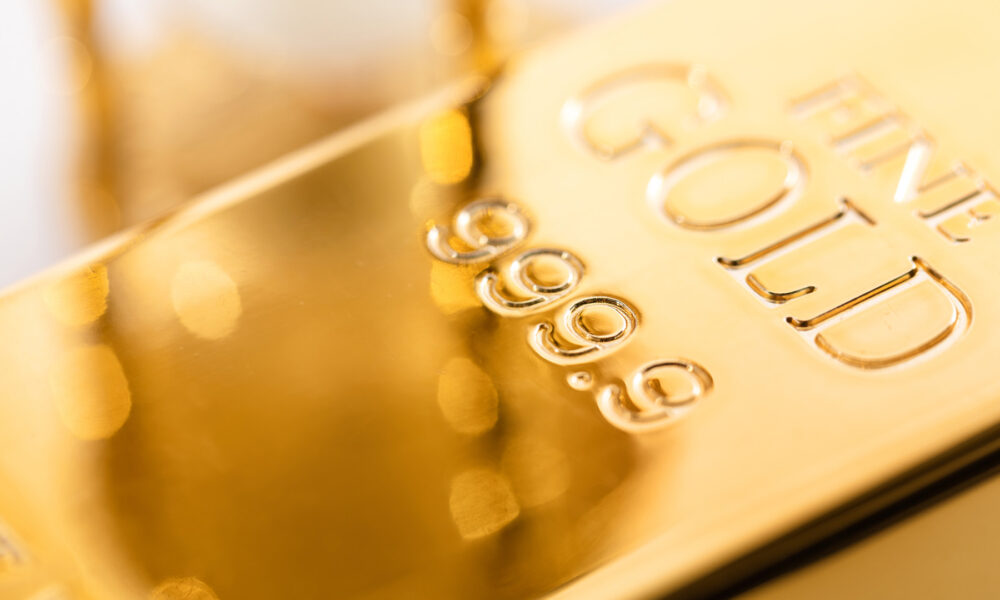News
Groupthink on financial markets – gold edition

Ah, the dangers of groupthink in financial markets – the gold edition.
There are some very stupid people among gold bulls – real, imaginary, and in hedge funds and the like – who ignore the possibility of negative events affecting sentiment and momentum just when they should be alert to the dangers.
Take last week as an example: at the close of Thursday, Comex gold futures were poised for a weekly rise of 1% to 2%, depending on the evolution of May’s employment data.
No one really thought the May jobs numbers would be a big surprise – the conventional wisdom was that a weak report confirmed the 68% chance of a Fed rate cut in September (some bettors secretly wanted a very bad outcome to give more chance at the July cut).
With the Fed meeting this week and the release of new forecasts for inflation, growth, employment and the much-watched dot plot of Fed members’ forecasts of future rate movements, the market was confident that the report on the job would be “good news”.
Before the jobs report, Friday night Sydney time, we would also see the release of May data on China’s foreign reserves and the most important part: gold purchases.
It seems to have been a fact that few remembered and even fewer thought to ask why China’s purchases in April fell so drastically to just 60,000 ounces or 1.7 tonnes, a fraction of the previous 22 tonnes in January and February combined.
The employment data provided the broadest shock – 272,000 for May, the unemployment rate far higher than any forecast, and while the unemployment rate rose to 4% (3.96% in fact), ending the long run of readings below 4%.
Salaries rose 0.4% in the month, with the annual rate returning to 4.1%. All confident bets on a rate cut later this year have been off the table – especially after cuts by the Bank of Canada and the European Central Bank created a strange macho vibe in some parts of Wall Street over who had the central bank and the majors. global markets. .
April’s number of 175,000 new jobs was reduced to 165,000, but this was ignored. May’s 272,000 was the second highest this year, after March’s massive 310,000.
It rose as US Treasury yields (jumping 15 points to nearly 4.4%) and the dollar, and stock prices fell.
But before the employment numbers were released, this was the rude awakening for gold and metal bulls.
Chinese reserve data from May was analyzed – there were no gold purchases and prices fell.
The People’s Bank of China did not buy gold last month, ending an 18-month buying spree and helped support and then boost global prices of the precious metal.
The People’s Bank of China has been building its reserves since November 2022, leading a flurry of purchases by global central banks in a context of growing geopolitical tensions.
China’s purchases of 60,000 ounces in April were down from 160,000 ounces in March and 390,000 ounces in February. The country’s imports in April, however, fell 30% compared to the previous month – all of this now appears to be driven by prices.
But the drop in demand as prices rose was evident in April, and traders, hedge funds and investors ignored the message.
But nothing more: the drop in April occurred when world prices rose sharply and then, in May, reached new highs, reaching around 2,454 dollars per ounce, 143 dollars per ounce above Friday’s close.
China’s gold reserves remained unchanged at 72.8 million troy ounces after 18 consecutive months of purchases. Its value, however, increased to US$170.96 billion, against US$167.96 billion in April, due to the rise in gold prices that forced China to suspend purchases.
Comex gold futures fell nearly 4% at one stage, ending at $2,311, for a loss of $79 an ounce (down more than $90 an ounce from the pre-employment data release, around of US$2,401 per ounce). .
But copper also fell – more than 3%, as did zinc, another hopeful bettor among hedge funds and speculators. Friday morning trade data showed a weakening in copper purchases.
Comex copper ended at $4.44 per pound, down nearly 4% on the day, and silver fell nearly 7% to $29.27, leaving many traders suffering real or unrealized losses or profits sharply. minors.
The 3.34% drop in the price of gold on Friday was enough to push the metal down for the week by about 1.5% and for the last month by about 2.3%.
Will this be enough to encourage Banco Popular to return to the market? It wouldn’t depend on that – wait and see because the Chinese have been shrewd buyers.
